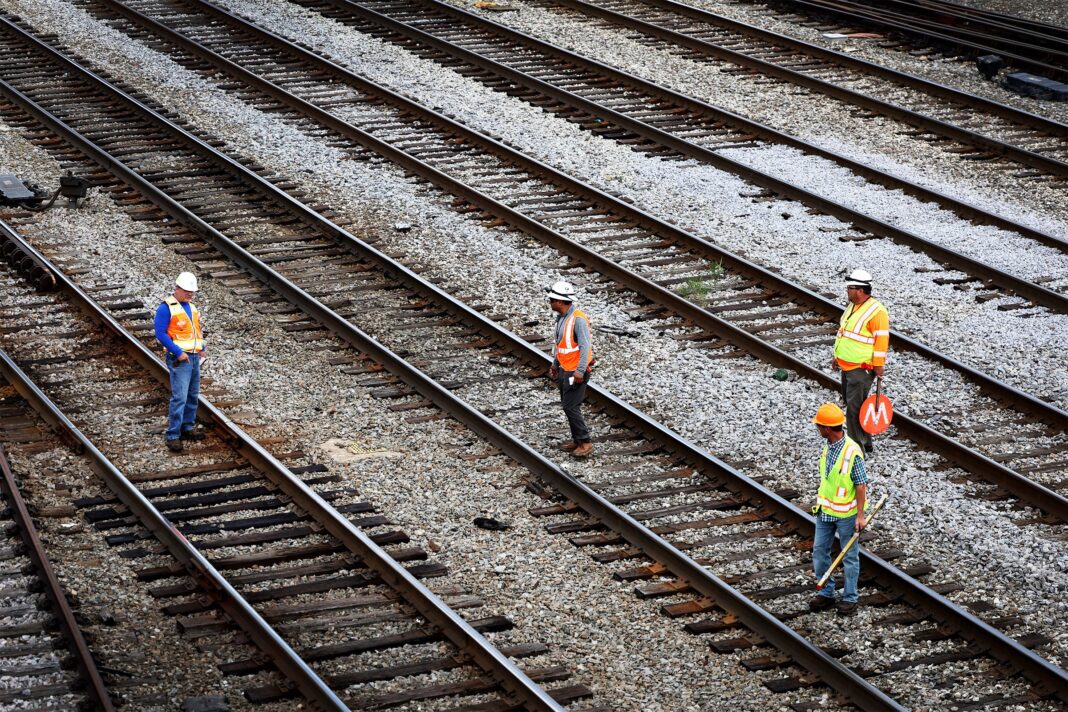In the early hours of Thursday morning, major US freight railroad companies reached a tentative agreement with unions, narrowly averting a nationwide rail shutdown less than 24 hours before a strike deadline. A work stoppage would have heaped devastating consequences on the nation’s economy and supply chain , nearly 30 percent of which relies on rail. Even a near miss had some impact.
Long-distance Amtrak passenger services, which use freight tracks, and hazardous materials shipments are now being restored after railroads suspended them to prevent people or cargo becoming stranded by a strike. The tentative agreement, to be voted on by union members, came through talks brokered by the Biden administration. It scrambled this week to avoid a shutdown that would have caused major disruption and worsened inflation by restricting the supply of crucial goods and driving up shipping costs.
Rail unions and the railroad industry association released statements Thursday welcoming the deal. But freight rail service has been unreliable since long before this week’s standoff , and trade groups representing rail customers say much work remains to restore it to acceptable levels. Just two-thirds of trains were arriving within 24 hours of their scheduled time this spring, down from 85 percent pre-pandemic, forcing rail customers to suspend business or—grimly— consider euthanizing their starving chickens.
Scott Jensen, a spokesperson for the American Chemistry Council, whose members depend on rail to ship chemicals, called the latest shutdown threat “another ugly chapter in this long saga of freight rail issues. ” Although Thursday’s agreement was lauded by companies dependent on rail freight, the ACC, the National Grain and Feed Association, and other trade groups also argue that further reforms to the rail industry are needed. Competition has dwindled as service concentrated among a handful of big railroads, which slashed their combined workforce by 29 percent over the past six years.
Rail customers have asked lawmakers and rail regulators to intervene. Suggestions include federal minimum service standards, including penalties for leaving loaded cars sitting in rail yards for long periods, and a rule that would allow customers to move cargo to another service provider at certain interchanges, to work around the fact that many customers are captive to a single carrier. Major US freight railroads made deep staff cuts in recent years as part of an effort to implement a leaner, more profitable operating model called Precision Scheduled Railroading.
Profits have indeed soared—two of the largest freight carriers, Union Pacific and BNSF, owned by Warren Buffett, broke records last year. But after many workers decided not to return to the rail industry after pandemic furloughs, a staffing shortage tipped the network into crisis. At federal hearings this spring, rail customers complained about suffering their worst ever service levels from a network that had been stripped of its resiliency.
Many freight rail jobs have always involved erratic schedules and long stretches away from home, but workers complained that the leaner operations saddled them with still longer hours, higher injury rates, and less predictable schedules. Many workers received no sick leave and were penalized for taking time off outside of their vacation time, which averaged three weeks a year, or holiday and personal time, which reached 14 days a year for the most senior employees. Earlier this year, BNSF implemented a stricter, points-based attendance policy that penalized workers for absences regardless of the reason, hoping to get maximum staffing out of its smaller workforce.
Other railroads also tightened their attendance policies. Because many rail workers must remain on call around the clock, that meant an emergency or routine doctor’s appointment could cost someone their job. 700 employees quit after BNSF changed its policy, according to two unions representing engineers and conductors, the Brotherhood of Locomotive Engineers and Trainmen (BLET) and the Transportation Division of the International Association of Sheet Metal, Air, Rail, and Transportation Workers (SMART-TD).
Time off for medical care was the final sticking point during this week’s union negotiations. The tentative agreement provides an additional paid day off, plus clearance to take time off without penalty for doctor’s appointments, hospitalizations, and surgeries. Workers will also receive raises equivalent to 24 percent over five years and keep their current health insurance.
The preliminary deal offers workers significantly more than recommended last month by a presidential emergency board attempting to resolve the dispute. In the absence of any voluntary agreement between unions and railroads, Congress could have imposed the board’s recommendations to avoid a strike, but doing so would have deprived workers of the ability to bargain for improvements and vote on an agreement. For the tentative agreement to become final it must be backed by a simple majority of the 57,000 members of BLET and SMART-TD.
The two unions have agreed not to strike in the interim. Eight other unions had reached preliminary agreements with the railroads before Thursday’s eleventh-hour talks, but would have respected a picket line in the event that any one union struck. Rick Paterson, a rail analyst at the investment firm Loop Capital Markets, says the agreement should prevent more workers from abandoning the railroads than if Congress had forced the PEB recommendations on them.
“A surge in attrition on the back of this agreement is now probably a low probability. ” Railroads say they’re hiring aggressively, but the challenges of improving service with a still-depleted workforce linger. .
From: wired
URL: https://www.wired.com/story/a-us-rail-strike-was-averted-but-the-crisis-is-far-from-over/



